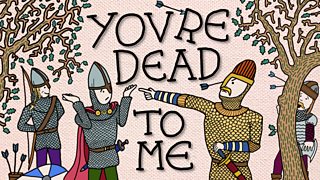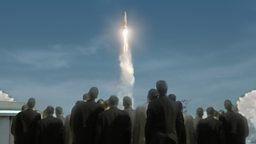91热爆school History Lesson: The Space Race
Greg Jenner, the brains behind Horrible Histories and the You’re Dead To Me podcast, wants to teach you a lesson. His new series, 91热爆school History, presents easily digestible chunks of knowledge in an entirely entertaining way. So strap yourself in, put your helmet on and get ready to blast off into The Space Race: when Russia and America vied to conquer the cosmos.
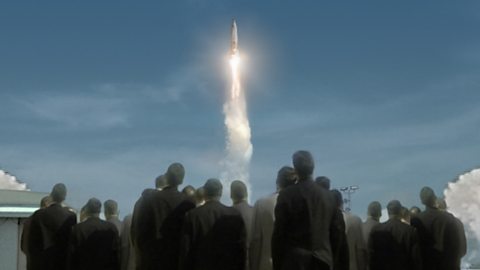
What was The Space Race?
Greg Jenner explains the war for the stars.
1. Things are Looking Up
Human beings have always been fascinated by what’s going on above our heads. 5000 years ago, in the time of the ancient Babylonians, astrologers studied the stars in an attempt to predict the future. But once the technology existed so that we could actually travel into space, rather than just look at it, things changed forever.
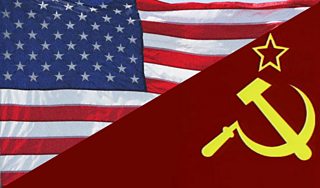
The USA and the USSR believed that whoever controlled space could control the destiny of the planet.
2. Two Tribes
During the 20th Century, in the years after World War II, the two greatest superpowers on the planet, Russia (known as the USSR) and America (the USA), ran their countries in two completely different ways: Communism (Russia) and Capitalism (America). Both thought their way of doing things was the right way, and a bitter rivalry between the two developed.
3. The Nuclear Option
This rivalry, with both nations worried about how powerful the other one was becoming, was known as the Cold War. Rather than the two countries actually fighting on battlefields with armies and tanks, they threatened each other with false or exaggerated information (known as propaganda) and also with many, many nuclear weapons. And soon this conflict moved into space.
4. Space is the Place
Both nations believed that whoever controlled space could control the destiny of the planet and prove that their particular way of thinking was the right one. They began to plough massive amounts of money into technology and training. Both wanted to be the first country to get something – anything – into space.
5. Round One
The first round in this epic space battle went to the Russians who, in 1957, managed to fire a satellite called Sputnik into orbit around the Earth. Sputnik wasn’t very big and didn’t do very much, except beep occasionally, but it was a massive triumph for the USSR and a huge embarrassment to the Americans.
6. Blown It
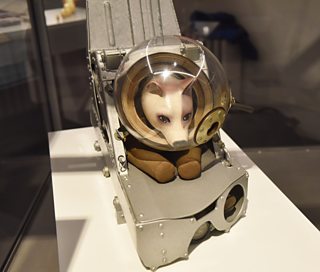
The American response to Sputnik was called Project Vanguard which attempted to launch in December 1957. Unfortunately, it blew up on the launch pad. Not a good day for the Americans, but a great day for newspaper headline writers who called the failure “Splatnik”, “Flopnik” and “Stayputnik”.
7. Rocket Mammal
Both nations moved from firing lumps of metal into space to firing animals in a similar direction. The Russians favoured dogs, with Laika, a stray from the streets of Moscow, being the first dog in orbit in 1957 (sadly Laika didn’t make it back – other space dogs got home safely). Where the Russians had their dogs, the Americans had their chimps, with Ham and Enos being launched, and getting back, in 1961.
8. Yuri Must Be Joking
So far Russia was winning the Space Race. But the Americans were sure they could get the first actual human into space before their competitors. But they were wrong. Once again those pesky Ruskies beat them to it and in 1961 Yuri Gagarin was launched into orbit aboard Vostok 1. Two years later the Russians also put the first woman into space, Valentina Tereshkova.
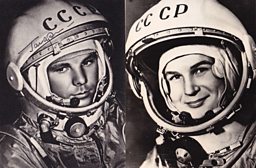
9. Astronomical Sums
The Americans were getting desperate. They came up with potty plans like blowing up a bit of the moon with a nuclear device. While Russia managed the first space walk in 1965, the Americans gained ground by docking two space craft for the first time in 1966. But both countries knew that landing someone on the moon was the big one. America started pouring huge amounts of cash into the space project.
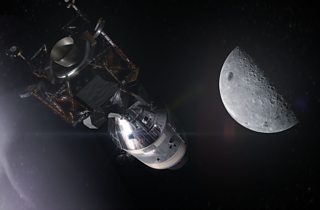
10. Stars in Their Eyes
Throwing all that money around paid off. Even though Russia had sent a robotic probe to the moon’s surface a few years earlier, it was America that went one step further. Watched by a massive global audience, in July 1969 the Apollo 11 spacecraft launched with Neil Armstrong, Buzz Aldrin and Michael Collins on board.
11. One Small Step
A few days later, watched by 650 million people on live TV, Armstrong became the first man to walk on the moon. (Aldrin became the first man to wee on the moon, when his urine collection device broke). Though the astronauts thought their chances of survival were only 50/50, the mission proceeded almost perfectly and all three returned home safely to huge acclaim.
12. Cosmic Champions
Despite the USSR being first during so many stages of the competition – first satellite, first animal, first man in space – by achieving the ultimate goal of planting a flag on the moon’s surface, America had undoubtedly won the Space Race and changed the course of human history forever.
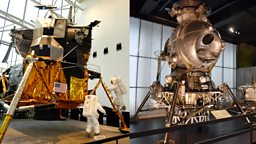
More from Radio 4
-
![]()
91热爆school History: The Space Race
Greg Jenner takes us on a history lesson through outer space.
-
![]()
91热爆school History Lesson: The Restoration
12 rollicking facts about The Restoration.
-
![]()
You're Dead To Me
Hear Greg Jenner's other hilarious history podcast on 91热爆 Sounds.
-
![]()
A History of The World in 100 Objects
100 programmes that retell humanity's history through the objects we have made.


